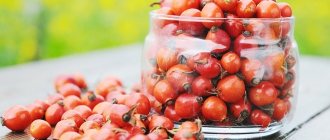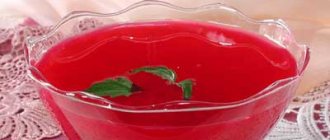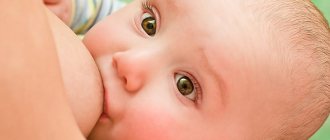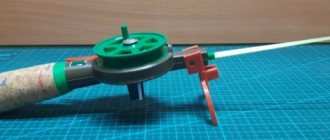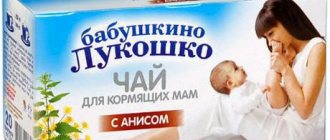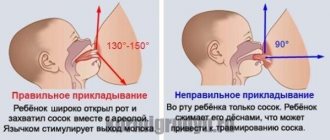Motherhood
4483
While pregnant, a woman could eat her favorite foods, excluding obviously unhealthy foods. But after the baby is born, the diet changes dramatically, since the lactation period for the baby is of great importance. The baby’s well-being will depend on the mother’s nutrition. In the first months, it is especially important to adhere to proper nutrition. But it is worth noting that the diet for nursing mothers is very different from regular diets. Therefore, you need to know all the subtleties associated with the use of certain products.
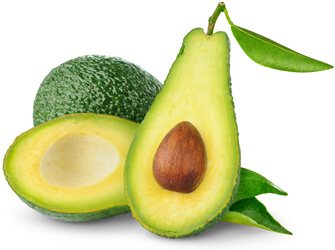
What is a diet during breastfeeding, a list of permissible and prohibited foods, we will describe in this article.
Basic principles of diet after childbirth
The young mother wants the newborn not to be capricious, to grow up as a healthy toddler and to benefit from breast milk.

To do this, you need to take into account the simple rules of nutrition for a nursing woman:
- Eat healthy foods. It's time to remember about eating right. A nursing mother needs to provide vitamins, microelements and other necessary substances not only for herself, but also for her baby.
- Avoid harmful foods. Breastfeeding is a time when unhealthy foods are taboo. Products that contain dyes, flavor enhancers, and flavored additives are completely excluded from the diet. It is necessary to adhere to a hypoallergenic diet, especially if the mother or newborn is prone to allergic reactions. Chocolate, coffee, honey, citrus fruits, red berries and fruits, some types of cheeses, and smoked foods can cause rashes to appear within a few hours after consumption. Allergens of protein origin accumulate in the body and cause skin problems in the baby within a couple of weeks. These include, for example, dairy and fermented milk products, eggs, nuts.
- Monitor the calorie content of your food. Breastfeeding requires additional energy, so you will need increased nutrition. Women are often afraid of gaining weight after childbirth if they eat more. But you can follow a diet for nursing mothers to lose weight and not gain extra pounds. You don't need a special diet. To do this, the main thing is to use quality products and not overeat. This approach will help not only maintain slimness, but also lose weight if necessary.
- Individual approach and consistency when planning your diet. The diet of a nursing mother will differ from month to month. The first weeks after birth the restrictions are quite strict, but gradually the menu is expanded. When the baby is less than a month old, a nursing woman introduces a new product into her menu every three days. Begin to consume unusual ingredients in small portions at first. The newborn's reaction is then observed. If everything is good, then in the future you can try a new dish every day, preferably in the first half of it.
- Fractionality of nutrition. Portions are kept small, but eaten at least 4-5 times a day.
- Sufficient amount of liquid. Drinking plenty of fluids will help improve lactation. A healthy adult needs to drink about two liters of water per day. During breastfeeding, fluids are consumed even more in the form of clean drinking water, green tea, and unsweetened fruit juice.
It’s useful to keep a food diary so you don’t miss anything and monitor your baby’s reactions to different foods. They add their diet for the past day. Note the serving size and time of administration. Changes in the child’s condition after the introduction of a new ingredient are recorded: colic, constipation or bowel disorder, changes in behavior.
Nutrition of a nursing mother by month - detailed table
Food after childbirth should be no less varied than during pregnancy. The diet needs to be gradually adjusted, adding new food over time.
60-90 days after birth, restrictions are not needed - the intestines return to normal functioning and with this many health problems for both the woman and the child go away.
In addition, the baby’s body is now able to accept what was previously an allergen for it.
- The first recommendation is that there is no need for strict restrictions. A priori “no” to alcohol, drugs, tobacco, medications without a doctor’s permission.
- The menu should contain high-quality food - proteins, carbohydrates and some fats. Pay special attention to the drinking regime. It is advised to select the diet individually, monitoring your well-being and the behavior of the newborn.
- You need to consume from 2500 to 3000 kcal per day.
- Breastfeeding can be done no earlier than half an hour after the woman herself has eaten.
- Introduce each new product separately, no more than once every 3 days. This way you can monitor the reaction of the child’s body.
Many pediatricians offer a table that contains a detailed list of foods that a young mother can and cannot eat. Despite all the features, you need to listen to these tips.
The nutrition table for a nursing mother includes only foods that are healthy for mother and baby.
Allowed foods for nursing mothers
The nutrition table for a nursing mother by month includes:
- coarse cereals (gluten-free);
- lean soups without cabbage;
- vegetables and fruits (except citrus fruits);
- dairy products (little by little and not whole milk!);
- dietary meat (boiled or steamed);
- boiled or baked lean fish;
- up to 20 grams of butter;
- dried fruits;
- biscuits, sponge cake;
- weak tea.
The principle of moderation should be observed in everything! Because even an excess of healthy food can lead to bloating and colic in a baby up to a month old!
Natural and healthy food should become the basis of a nursing mother’s diet
Restricted foods for nursing mothers
In the nutrition table for breastfeeding by month, among the prohibited supplies, one can distinguish several groups of allergenic foods that disrupt the gastrointestinal tract, change the taste of milk and contain unnatural additives:
- Citrus fruits, red fruits, baked goods, smoked foods, coffee, cocoa, chocolate, honey, nuts - all of these are considered allergens and their consumption should be, if not stopped, then minimized. It is also worth carefully monitoring the reaction of the child’s body.
- Flatulence and colic are caused by cabbage, legumes, melons, tomatoes, and bell peppers.
- Onions and garlic can be eaten in small quantities. The only spices allowed are dried herbs, ground pepper, and bay leaves. In baked goods (for example, permitted charlotte), vanillin and zest are allowed (in small quantities!).
Be sure to exclude these foods from your diet and you will forget about possible allergy problems in your newborn.
Products for nursing mothers that enhance lactation
During the first month, a new mother may have problems with lactation and milk supply.
In the table of a nursing mother's diet by month, which enhances lactation, there are primarily drinks. Warm green tea, mild broth or natural (but hypoallergenic!) juice 30 minutes before feeding can significantly help a woman.
This also includes: raw nuts (almonds, pine nuts, walnuts - but in small quantities!); buckwheat (it is recommended to fry it in a dry frying pan and eat it like seeds) and rolled oats porridge, carrots, lettuce, sour milk (the best is Adyghe cheese, feta cheese).
Detailed nutrition table for a nursing mother by month
Recommended products must be included in the diet of a nursing mother
An incorrect diet can lead to disruption of lactation (and there will simply be nothing to feed the baby!) and a deterioration in the well-being of the woman herself.
And the worst thing is the baby’s health problems, because in the first month of his life all the functions of his body are established.
His life and health depend on this period! Be sure to avoid stress! And don't neglect night or extra feedings. Take care of yourself and your baby.
Nutrition of a nursing mother by month - detailed table Link to main publication
Source: https://mam-book.ru/pitanie-kormyashhej-mamy-po-mesyatsam-podrobnaya-tablitsa
Why is this diet needed?
A breastfeeding woman has a choice. She can completely eliminate some foods from the menu or reduce their consumption.

If you do not adjust your diet during this period, the risk of the following problems increases:
- Baby has colic. Most parents experience increased gas production in babies. The newborn has a swollen, hard belly, the baby’s cry is loud and shrill, the baby draws in his legs. Placing the baby on the tummy before feedings, sitting the baby out, massage, and applying a warm diaper to the body help eliminate colic. However, all these manipulations are meaningless if a woman does not limit herself in food;
- Diathesis in infants. Rashes on the body cause discomfort and worsen the general condition.
During the first weeks and months of life, the functioning of the child’s gastrointestinal tract improves and his immunity is formed. The baby’s body is very vulnerable, so poor nutrition of a woman at this time can cause problems with the baby’s health in the future. Tasty and nutritious mother's milk is the best food for the baby. And this irreplaceable food needs to be made as healthy and safe as possible.
The postpartum diet also has a beneficial effect on the mother. Proper nutrition will help you recover faster after pregnancy and childbirth, maintain strength to care for your baby, rest fully and enjoy motherhood. A healthy nursing woman and a calm child will create psychological comfort for all family members.
A young mother sometimes experiences health complications and disruptions in the functioning of various organs. For example, hemorrhoids appear even in those women who previously did not know about such a delicate problem. A proper diet will help get rid of some complications at the initial stage of the disease.
Advantages of a multicooker
In just a few years of its existence, multicookers have gained universal recognition. If we consider the benefits of the device for a nursing mother, we can highlight the following positive factors.
- You don't have to constantly be at the stove. You just need to load all the necessary ingredients into the bowl of the device, set the desired modes and go about your business. There is no need to constantly adjust temperatures.
- Devices that have a delayed start function are especially convenient. They allow you to prepare all the ingredients when you have free time, and the start of the cooking process is set according to the daily routine.
- The recipes are as simple as possible. You can even take as a basis the method of preparing your favorite delicacy, which during the feeding period is on the list of prohibited foods. Thanks to gentle heat treatment, the product will be included in the permitted group.
- The multicooker can keep the product fresh and hot for up to several hours.
- Protecting kitchen utensils from splashes reduces the time a woman spends in the kitchen.
- Multicookers are multifunctional, and any mode ensures gentle processing of products and maximum preservation of nutrients. The device allows nursing mothers to significantly diversify their diet.
Useful: Benefits of long-term breastfeeding
The main advantage of the devices is that they make any food healthy, tasty and nutritious. A uniform effect on dietary fiber prevents the appearance of harmful crusts and does not lead to the evaporation of beneficial liquid.
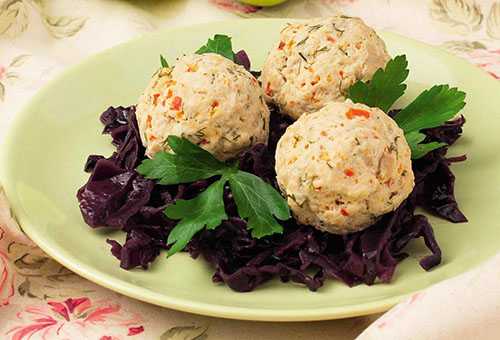
Choosing foods for a nursing mother

Tasty, varied, healthy, fresh - this is the kind of food a woman needs while breastfeeding. A table of permitted and prohibited products is given below.
| Must be consumed | Use with some restrictions | Cannot be consumed |
| Porridge. It’s better to start with buckwheat. The assortment is gradually expanding into rice, wheat, millet, semolina, and pearl barley. | Flour: small amounts of pasta, white bread croutons. It is not advisable to eat fresh yeast baked goods. | Canned food, pickled vegetables, sauerkraut, legumes (peas, beans). |
| Lean meats: beef, chicken, rabbit, turkey. | Fruits and berries: little by little. Be careful when approaching the baby's first year: red fruits, which often cause allergies (strawberries, raspberries) and exotic fruits. | Alcohol, carbonated drinks. |
| Fish dishes. Already in the first month of a baby’s life, you can eat baked lean fish. The fish menu is gradually being expanded, but it is better to avoid eating crabs, shrimp and other seafood that is unusual for the body. | It is better to boil, stew, or steam vegetables. You can: zucchini, potatoes. With caution: onions, garlic, cucumbers, grapes, white cabbage, tomatoes, melon, radish, radish. | Sweets: jam, jam, culinary products. |
| Add a little high-quality vegetable oil and butter to prepared dishes. | Mild seasonings and spices can be added little by little when the baby is 2 months old. | Sausages, smoked meats. |
| A sufficient amount of high-quality water without gas. | Fermented milk and dairy products are introduced into the diet in the absence of allergic reactions, and eaten little by little. Possible: low-fat cottage cheese, kefir, fermented baked milk, sour cream Not advisable: milk, especially raw and whole milk. | Mushrooms, which put a lot of stress on the stomach, are difficult to digest. |
| Nuts are a fatty allergenic product. It is better to opt for peanuts, cashews, and hazelnuts when the child is six months old. | Any very fatty food, fast food. |
The diet may vary depending on the specific situation. The table will look different if the baby is prone to diathesis or the mother has problems with the gastrointestinal tract.
Diet of a nursing mother by month, table with sample menu
From the first days of life, a newborn baby needs breast milk. Therefore, in order not to harm her little miracle, a new mother should closely monitor her diet. Specially designed diets will help a nursing woman with this.
Compliance with the diet during lactation - benefit or harm
A nursing mother needs to eat a complete and balanced diet every day.
As a doctor, I completely agree with this statement. Although the first two months, and especially the first days after childbirth, it is better to adhere to a strict diet. After all, the baby is still very weak, and his digestive system is just beginning to work outside the womb. A nursing mother must strictly monitor her diet
Everything a mother eats directly affects the composition of breast milk and, as a result, the baby’s well-being. Any non-compliance with the rules can provoke in a child:
- allergies;
- rash;
- bowel dysfunction;
- colic;
- restlessness during sleep.
It is important for a woman to monitor the quality and freshness of the products she eats. Food poisoning will not bring anything good to an organism weakened by childbirth.
The following will also not benefit a nursing mother:
- binge eating. Many breastfeeding women are convinced that they have to eat a lot, like for two. This diet will bring nothing but excess weight and a distended stomach;
- unreasonable restriction in food.
The second mistake young mothers make is too strict a diet for no good reason. If there are no problems with your health and the condition of your baby, you should not limit yourself to your favorite foods.
Pediatrician, doctor of the highest category E.
Komarovsky believes that the diet of a nursing mother should be varied. In his opinion, you should not limit yourself to food, but you must strictly monitor the reaction of the infant.
If the baby develops redness, rash, abnormal bowel movements or abdominal pain, the product should be excluded.
Types of diets for nursing mothers
When choosing a diet during lactation, use common sense. You shouldn’t push yourself into strict limits without any particular reason, but you shouldn’t use everything in a row either.
Nutrition for colic while breastfeeding
The principle of the colic diet is to exclude from the nursing mother’s diet everything that can cause discomfort in the baby’s tummy. You should eat food often, but little by little - four or five times a day, 100–150 fifty grams at a time .
Intestinal colic is called abdominal pain in an infant, which is associated with the adaptation of the baby’s gastrointestinal tract to new conditions of post-uterine development.
It is believed that the baby’s digestive system begins to work stably at four months and colic goes away on its own.
Therefore, it is worth adhering to such a diet during the first four to five months after childbirth.
This diet helps increase and stabilize lactation, start the body’s recovery process after childbirth, improve the baby’s digestion, and avoid colic and other types of ailments.
It is completely safe and well tolerated thanks to a large list of approved products. The occurrence of side effects when following a diet for colic is practically reduced to zero.
Except in cases of individual intolerance to individual ingredients.
Recommended products and methods of preparing them for a colic diet
Benefits for a young mother:
- boiled meat (beef, chicken, turkey, rabbit);
- lean soup without adding legumes and garlic;
- braised cabbage. Cabbage should be stewed without adding salt, spices or sauce. Excessive consumption of this product may cause constipation or diarrhea, as well as flatulence in the baby. Therefore, you can eat no more than 200 grams of stewed cabbage at a time and do not eat it every day;
- oatmeal or buckwheat without adding salt and butter;
- pasteurized milk, kefir;
- low-fat cottage cheese (one hundred grams per day);
- stewed zucchini;
- cookies that do not contain margarine;
- weak green tea with milk;
- compote with dried fruits, for example, dried apples. The woman herself decides whether to strain the compote or not, based on her taste preferences.
Stewed cabbage is allowed for nursing mothers, but should not be overused
For me, dried fruits from compote were an excellent dessert during lactation. I cut them into small pieces and added them to cottage cheese or porridge.
Prohibited Products
There is a list of foods that can cause discomfort in a baby while breastfeeding:
- green pickled peas;
- fresh cabbage of various varieties;
- cakes, chocolate, honey and other sweets;
- onions and green onions;
- asparagus, celery, sweet pepper;
- orange, grapefruit, lemon;
- fresh cherries, plums, grapes;
- strong green or black tea, coffee, and cocoa;
- nuts and exotic fruits;
- fatty, smoked, canned, fried;
- fast food;
- alcohol. Even in small doses it causes severe poisoning.
During the colic diet, it is forbidden to eat salad made from fresh cabbage and pickled green peas, as its ingredients can cause colic and indigestion in the baby.
: Dr. Komarovsky’s opinion on breastfeeding and colic
I breastfed my two children until they were one and six months old each on an anti-colic diet. Therefore, I do not agree with the opinion of Dr. Komarovsky. Such a diet not only reduces the likelihood of colic in the baby, but also stabilizes the general condition of the mother.
Photo gallery: allowed and prohibited foods in the diet for colic
Boiled low-fat meats are a mandatory component of a nursing woman's diet. Cabbage can cause colic. Daily consumption of cereals is mandatory for a nursing woman. A young mother is recommended to consume cottage cheese daily, the fat content of which does not exceed 5%. Legumes increase gas formation in the intestines. Rich broths should be prohibited during pregnancy. breastfeeding Any sweets should be significantly limited, and in case of severe colic, completely eliminated
Gluten-free diet while breastfeeding
A gluten-free diet is prescribed exclusively by a doctor and in order to identify and eliminate the symptoms of a disease such as celiac disease. Celiac disease is a congenital intolerance to gluten-containing foods.
Symptoms of this disease are expressed in:
- stopping weight gain;
- growth arrest;
- poor appetite;
- copious stools with mucus;
- bloating;
- lethargy and irritability.
One of the symptoms of celiac disease is a large belly and thin limbs.
As a rule, parents learn that their baby is gluten intolerant when they begin introducing complementary foods made from gluten-containing cereals, bread, pasta or cookies.
The principle of a gluten-free diet is to remove foods containing gluten from the diet of mother and baby. You can eat four or five times a day. The serving size depends on the chosen dish.
Studies of celiac disease have shown that if a woman consumes foods that contain gluten from five months after giving birth, this reduces the risk of developing the disease by 50% and helps the baby’s intestines adapt and absorb gluten without problems.
Authorized products
During a gluten-free diet you can eat:
- dairy and fermented milk products;
- fruits;
- vegetables;
- berries;
- eggs;
- dietary meat: veal, chicken, rabbit and turkey;
- fish;
- gluten-free cereals: rice, corn, buckwheat;
- legumes: beans, peas, soybeans, lentils;
- nuts.
Almost all vegetables and fruits are allowed on a gluten-free diet
Dairy-free diet while breastfeeding
Children suffering from an allergy to cow's milk protein and their breastfeeding mothers can only be switched to a dairy-free diet by their attending physician. Prescription of appropriate nutrition occurs only after reliable identification of the causes of food allergies. As a rule, the diet is designed for a period of more than six months.
Recommended Products
During a dairy-free diet, the taboo is mainly on foods rich in calcium, magnesium, vitamin D and phosphorus. Therefore, it is worth making sure that breast milk contains enough vitamins and minerals that can fill this gap.
In this case, a nursing mother should include the following foods in her diet:
- lean meats (rabbit, turkey);
- vegetable oils;
- cereals (corn, buckwheat, rice, millet);
- fresh herbs (parsley, dill);
- whole wheat bread;
- various varieties of cabbage;
- light-colored fruits and vegetables (green apples, zucchini);
- other types of milk (coconut, rice).
All products should be introduced gradually, observing the baby’s reaction. We also must not forget that the daily calorie intake during lactation is 3000–3500 kilocalories. Therefore, in order to produce the required amount of milk, you need to eat enough meat and vegetables.
Salt-free diet for a nursing woman
Many nursing mothers argue about the benefits and harms of salt during lactation. Salt is an excellent and indispensable seasoning for many dishes, but its excessive use may not have the best effect on human health.
Nutritionists are confident that daily consumption of five grams of salt is extremely necessary for our body, but its excess negatively affects the functioning of internal organs.
Fat deposits are actually the same liquid that, when retained in cells, increases their size. This is how cellulite and sagging skin appears.
During lactation, a woman consumes large amounts of fluid. As a result, swelling may appear in the area of the legs, face and arms. In such cases, it is recommended to adhere to a salt-free diet. During a salt-free diet, it is not fat tissue that is lost, but kilograms of water
It is worth noting right away that the absence of salt for several days will not help you radically lose weight. A salt-free diet is only suitable as a way to unload the body.
It is impossible to completely abandon the use of salt, since its substances are directly involved in regulating the water-salt balance of our body.
Long-term restriction can have a detrimental effect on well-being.
Baby from 0 to 1 month
The main task of this period is to adapt the baby to the world around him and establish lactation.

In the first month of a newborn’s life, a young mother follows a strict diet:
- The diet uses lean meats: chicken, rabbit, turkey, beef. Meat dishes are consumed boiled or stewed.
- Vegetables are steamed or boiled. It’s better to start with zucchini and potatoes.
- Allowed fruits include bananas and apples in limited quantities. It is better to refrain from using the rest. Apples are good to eat baked.
- Flour products are used with caution. You can eat pasta, some crackers and biscuits. Baked goods and brown bread are prohibited.
- Soups are prepared with vegetable broth.
- The menu definitely includes porridge. Especially useful is buckwheat. If the mother or child has constipation, limit the consumption of rice.
- It is better to replace dairy products with fermented milk and eat them in small portions. For now, it is advisable to limit yourself to kefir. If your baby is allergic to this group of foods, a dairy-free diet may be necessary.
You can restore fluid reserves in the body with good quality drinking water or weak green tea.
Child from 1 to 3 months

The menu is expanded taking into account the individual characteristics of the baby:
- From this time on, soups made with vegetable broth were gradually replaced by first courses made with meat broth.
- You can eat some baked goods prepared at home.
- Gradually replenish the fruit diet, except for red fruits.
- Vegetables are being consumed not only processed, but also raw. New types are gradually being added: pumpkin, carrots, beets and others.
- Various types of cereals are introduced. By the end of the third month of the baby’s life, they eat semolina, millet, pearl barley, and barley.
- Lean young pork is added to the permitted types of meat.
- For dessert, it is appropriate to prepare jelly from the fruits introduced into the diet.
In addition to tea and water, they drink natural compotes from homemade fruits. First apple, later pear and other types. You can also quench your thirst with fruit drinks, for example, currant or cranberry.
By the age of three months, a nursing mother can eat natural honey of good quality (if the child does not have a tendency to allergies), low-fat sour cream, and boiled onions.
Baby from 3 to 6 months
After the baby’s three-month “anniversary,” familiar products gradually return to the mother’s menu. Except for those on the prohibited list.

The menu looks like this:
- Almost all permitted vegetables are present in the diet, including green onions. You should only refrain from garlic, cabbage, and legumes.
- The fruit menu is becoming more abundant, but it is too early to include citrus fruits and grapes in the diet.
- Happy time for mothers with a sweet tooth. For dessert, you can eat marshmallows, marshmallows, and low-fat homemade baked goods, such as sponge cake. However, the time for chocolate has not yet come.
- To improve the taste of the first and second courses, it is appropriate to add some simple spices and fresh herbs to the food.
- Some herbal teas are allowed.
The maximum benefit from a diet after childbirth will be if you take into account the age and individual characteristics of your baby and follow the principles of nutrition during breastfeeding.
Basic principles of nutrition during breastfeeding
There are several rules that a nursing woman should follow when organizing the meal process, regardless of the age of the child.
- Product quality. The composition of the dishes that are present in the mother’s daily diet should be filled with exclusively fresh products that are healthy for the body of the woman and the child. Special attention should be paid to vegetables and fruits - it is best to purchase them in trusted places where the seller can provide all the documents guaranteeing the high quality of the goods.

- Prohibited ingredients. Caring mothers are advised to avoid eating many foods while breastfeeding. Among these are various alcoholic drinks, fried foods, smoked products, onions and garlic, hot seasonings and much more. On the Internet you can find many tables that clearly show which foods are best not to eat.
- Rich menu. Despite the fact that when breastfeeding a baby, many dishes are prohibited for consumption, the mother’s diet should be varied. Allowed ingredients are fish, lean meats, dairy products, non-red vegetables and fruits and other dietary foods.
- Compliance with diet. It is best to eat in small portions, about 6 times a day. The ideal option is to eat half an hour before feeding the baby.
- Individual characteristics of the body. New dishes should be introduced into the diet gradually. On the first day, mom can eat very little food. If after 24 hours the baby does not have an allergic reaction, the portion can be increased.
Experts recommend following the above recommendations throughout the entire period of guards.
Menu from six months to 1 year
When the child turns six months old, there will be even fewer restrictions on food.

Every day, the menu of a nursing mother approaches the composition familiar to adults:
- You can treat yourself to fried foods.
- It is acceptable to eat almost all fruits and vegetables.
- The diet includes chocolate, nuts, and citrus fruits.
Closer to the first year of a son or daughter’s life, food restrictions will remain only for those women whose babies are prone to allergies. For everyone else, only food from the list of prohibited foods will be prohibited.
What does Dr. Komarovsky recommend?
Dr. Komarovsky, an authority on “children’s” issues, believes that the main thing for a nursing mother is a positive attitude and good health. He is against any diets for women during this period and advises not to change diet after childbirth.

Komarovsky recommends not eating new foods during this time, eliminating alcohol, limiting caffeine intake, and under no circumstances going hungry. The doctor suggests that you definitely include seafood in the menu (at least 300 g per week), eat a varied diet, drink plenty of fluids and monitor the baby’s reaction to any product in the mother’s diet.
